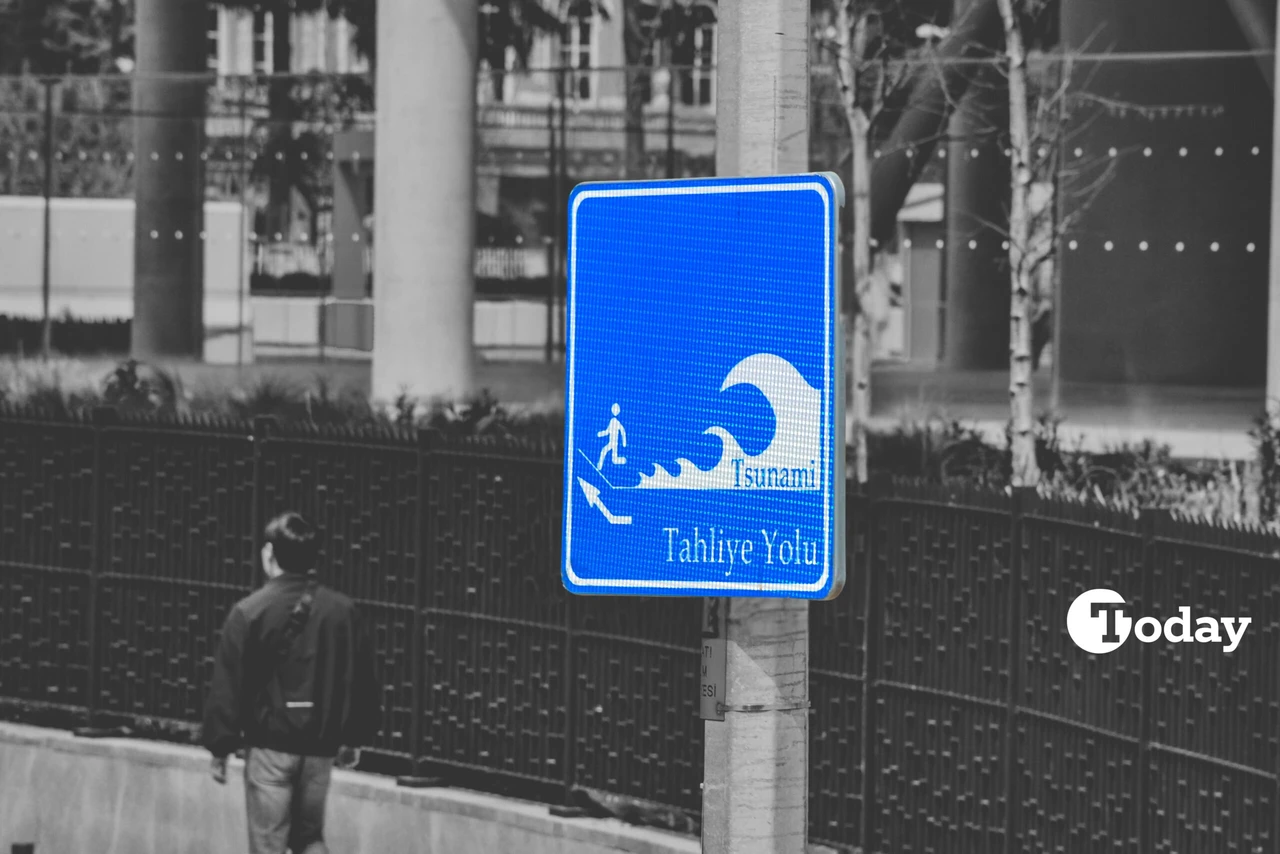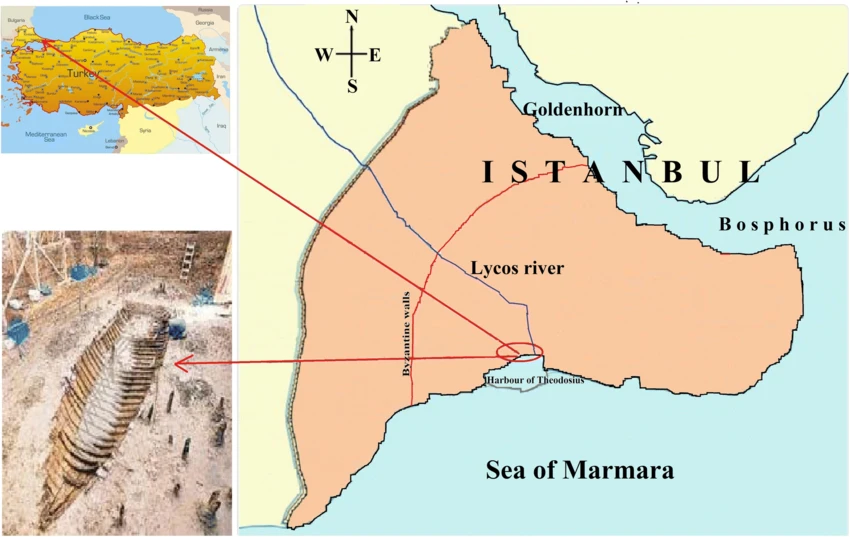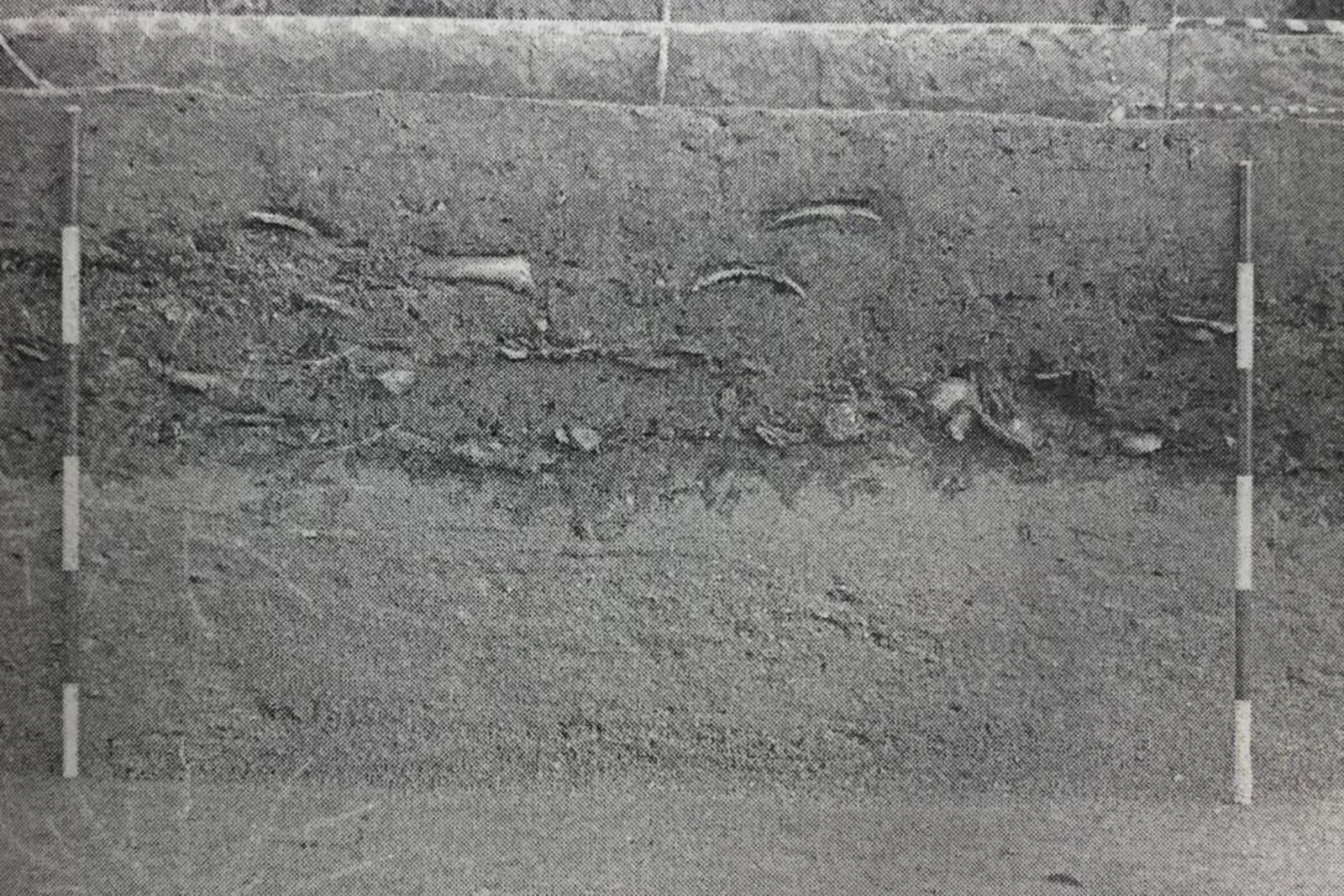Could a megaquake unleash a tsunami in Istanbul?
 Tsunami escape route sign in Galata port, Istanbul, Türkiye. (Photo collage by Türkiye Today team)
Tsunami escape route sign in Galata port, Istanbul, Türkiye. (Photo collage by Türkiye Today team)
A series of earthquakes in the Marmara Sea off Silivri on April 23, 2025—culminating in a 6.2 magnitude tremor followed by more than 260 aftershocks—has revived concerns about a potential tsunami in Istanbul.
While no major tsunami occurred, minor coastal wave activity was observed, reminding experts and citizens alike of the region’s volatile seismic history and the ever-present threat beneath the sea.
Could a devastating tsunami follow? Historical and geological evidence suggests these fears are not unfounded.

Yenikapi excavations reveal ancient tsunami in Istanbul
The possibility of a tsunami in Istanbul might seem unlikely to some, but archaeological and historical evidence tells a different story. During the construction of Istanbul’s Marmaray metro line in Yenikapi, archaeologists unearthed over 37 shipwrecks and layers of sediment pointing to multiple tsunami events. One of the most telling discoveries was a keel of a Late Roman ship found intact—resting on its base, undisturbed, with cherry seeds still preserved in baskets on board.
According to archaeologist Metin Gokcay, this preservation suggests not a storm, but a sudden and violent surge of water—likely a tsunami.
Historical records and eyewitness accounts, such as those of the Byzantine historian Agathias, describe three powerful earthquakes in Constantinople between A.D. 542 and 557. The 557 quake, in particular, is believed to have triggered a tsunami that flooded the Theodosius Harbor and left behind a distinctive debris layer. At that time, 6-meter waves reportedly breached the city’s sea walls—powerful enough to damage the Hagia Sophia.

Modern science confirms historical warnings
Scientific research continues to build on these ancient accounts. According to a study published in the Journal of Seismology, the Marmara Sea has experienced more than 300 destructive earthquakes over the past 4,100 years. At least 40 of these quakes are thought to have triggered tsunamis. Türkiye, with over 8,300 kilometers of coastline, has witnessed more than 90 tsunamis in the last 3,000 years—many of them centered in the Marmara region.
One modern study, commissioned by the Istanbul Metropolitan Municipality and conducted by Japan’s OYO Int. Co., modeled 49 tsunami scenarios for the Marmara Sea. The results are sobering: wave heights along Istanbul’s eastern coast could reach up to 5.5 meters, with tsunamis making landfall in just 8 minutes.
Today’s quakes are a reminder, not an exception
While today’s 6.2 magnitude earthquake did not produce a catastrophic tsunami in Istanbul, minor wave activity was observed along the Marmara coast—proving just how sensitive the region is to seismic shifts. Experts warn that a stronger earthquake—anything above magnitude 6.5—could very well trigger a destructive tsunami capable of impacting coastal districts within minutes.
In fact, maximum wave height models suggest that tsunami waves could reach 5.6 meters along parts of Istanbul’s coastline.
While Istanbul has long braced itself for “the big one,” city planners and scientists are increasingly turning their attention to tsunami preparedness. Enhanced warning systems, public awareness campaigns, and evacuation planning are now seen as essential—not just for earthquakes but for the waves that could follow them.



